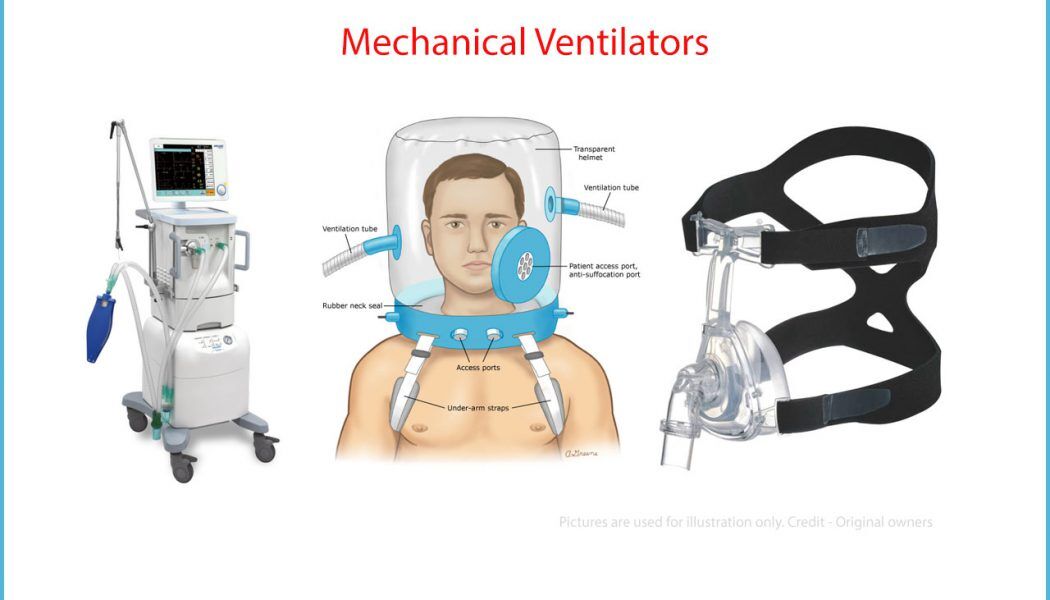As you all know, a Ventilator is a device used for artificial breathing. It takes over a body’s breathing process in case of a disease or difficulty in breathing due to a failing lungs. It gives the affected patient a chance for survival by giving some time to fight against the infections and other difficulties in normal breathing. There are mainly two types of Medical Ventilation systems – the Mechanical/Invasive and Non-Invasive (NIV).
Mechanical Ventilators supplies pure air, to match air to body temperature and adds moisture. A tube connected to the Ventilator is inserted into the airway to the lungs through which Oxygen (fresh air) is provided to the patient and Carbon Dioxide (user air) is removed. The Ventilator unit contains Air Pressure Systems, Controllers and a Humidifier. There are two types of Mechanical Ventilators – Positive Pressure Ventilator (PPV) and Negative Pressure Ventilator (NPV). In the PPV, air is pushed into the lungs through airways and in the NPV air is sucked into the lungs by stimulating movement of the chest.
Non-Invasive Ventilators provide breathing air to the patient through a face mask fitted over the nose and mouth and does not use any tubes inserted into the airway.
There is another type of ventilation called CPAP – Continuous Positive Airway Pressure which keeps the patient’s airways continuously open. It uses a hood, where pressurized oxygen is supplied via a valve. The hood is fitted over the head/face and secured. This type of ventilation reduces the risk of airborne transmission of the virus. It is like a helmet, which surrounds the patient’s entire head, supplying oxygen, which is sealed with a soft, airtight collar that wraps around the neck.
In the case of Covid-19 Corona Virus disease, the virus causes damage to the lungs creating breathing difficulties and hence drop in the oxygen levels required by the body. Therefore, a ventilator is used to supply fresh air with increased level of oxygen into the lungs thus easing the breathing process. A patient who is undergoing ventilation is given medication to relax the respiratory muscles so that their breathing can be completely controlled by the ventilator. The humidifier in the ventilator adds heat and moisture to the air supply so that it matches the patient’s body temperature.
All medical ventilators require close supervision from a trained medical staff. Patients with less severe symptoms could be given non-invasive ventilation using face masks and mouthpieces to push oxygen into the lungs. Since there are no tubes inserted into the lungs, it is called non-invasive method. Patients with severe respiratory problems/lung infection are to be provided the mechanical ventilation in the Intensive Care Units (ICUs) to maintain the safe level of oxygen supply.
Not all Covid-19 patients, unless they suffer from acute respiratory problems, need the mechanical ventilation. A hospital grade ventilator is a costly one between US$ 25,000 and 50,000 whereas the non-invasive ones cost around US$ 4,500.
Here are some video links that you can watch to know more about Ventilators
What is Mechanical Ventilation?: Ventilators Explained
Mechanical Ventilator System Concept: Mechanical Ventilator
Pin it for later
